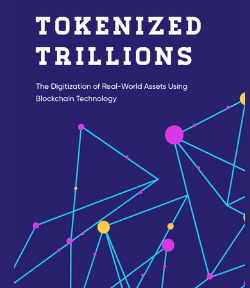
The Ultimate Crypto Guide 2023 – All You Need To Know
Bitcoin Basics – The Complete Guide 2023.
How Bitcoin Works
Bitcoin is based on a technology called blockchain, which is a decentralized, digital ledger that records all transactions made using the currency. The ledger is maintained by a network of computers, rather than a central authority, and it is designed to be tamper-proof and unchangeable.
When someone wants to make a transaction using Bitcoin, they broadcast it to the network of computers that maintain the blockchain. These computers, called nodes, then verify the transaction using complex algorithms. Once a transaction is verified, it is grouped with other verified transactions into a “block.” The block is then added to the existing chain of blocks, creating a permanent, unchangeable record of the transaction.
This process of verifying transactions and adding them to the blockchain is called “mining.” Miners are incentivized to participate in the network by receiving a reward in the form of newly minted Bitcoins for each block they add to the blockchain. As more miners join the network and competition for the reward increases, the difficulty of mining increases, and the reward decreases.
The technology behind Bitcoin, the blockchain, is a distributed ledger technology that enables the creation of tamper-proof, transparent, and decentralized systems. It has many potential applications beyond just digital currencies, like supply chain, digital identity, and voting systems, among others. Bitcoin and other digital assets can be traded on centralised exchanges such as Binance, Luno, Bybit, OKX, Coinbase, BitMEX, Huobi, Kraken, KuCoin, etc. BTC or other cryptos can also be exchanged on peer-to-peer platforms such as Noones or Remitano.
The best platforms to use when trading Bitcoin or cryptocurrencies are decentralised exchanges such as Gains Network (gTrade), GMX, MUX, ApexPro, SynFutures, etc.
The key features of Bitcoin include:
- Decentralized: There is no central authority controlling the Bitcoin network.
- Secure: The blockchain technology is designed to be tamper-proof and unchangeable.
- Transparent: All transactions are recorded on the blockchain, which is accessible to anyone.
- Anonymous: While transactions are recorded on the blockchain, the identity of the parties involved is not revealed.
- Fast: Transactions are processed within minutes, unlike traditional banking systems.
- Borderless: Bitcoin can be sent and received by anyone, anywhere in the world.
![]() Why cryptocurrencies are becoming popular
Why cryptocurrencies are becoming popular
The purpose of cryptocurrency, such as Bitcoin, is to serve as a decentralized digital currency that allows for fast, secure, and borderless transactions. Cryptocurrency aims to provide an alternative to traditional government-issued fiat currencies and the centralized financial systems that support them. One of the key features of cryptocurrency is that it is decentralized, meaning that it is not controlled by any government or institution. This decentralization allows for more freedom and privacy in transactions, as well as greater resistance to censorship and fraud.
Another key feature of cryptocurrency is the use of blockchain technology, which allows for the creation of tamper-proof and transparent digital ledgers. This technology allows for the secure and efficient recording of transactions, and it has many potential applications beyond just digital currencies. Cryptocurrency also aims to provide an alternative to traditional financial systems, which can be slow and costly to use, especially for cross-border transactions. By using cryptocurrency, individuals and businesses can avoid the fees and delays associated with traditional banking systems.
How are cryptocurrencies created?
There are several ways that a new cryptocurrency can be created:
-
Initial Coin Offering (ICO): This is a fundraising method in which a new cryptocurrency project sells a certain number of tokens to early investors in exchange for other cryptocurrencies, such as Bitcoin or Ethereum. The tokens are similar to shares of a company and can be traded on cryptocurrency exchanges.
-
Airdrops: This is a method in which a new cryptocurrency project distributes tokens to existing holders of a specific cryptocurrency, such as Bitcoin or Ethereum. The airdrop is usually done to increase awareness and adoption of the new cryptocurrency.
-
Forking: This is a method in which a new cryptocurrency is created by copying the code of an existing cryptocurrency, such as Bitcoin or Ethereum. The new cryptocurrency is then modified to have different features or uses than the original.
-
Mining: This is a method in which new cryptocurrency is created through the process of validating transactions on a blockchain network. Miners are incentivized to participate in the network by receiving a reward in the form of newly minted cryptocurrency for each block they add to the blockchain.
-
Centralized issuance: This is a method in which a central organization or company creates and issues a new cryptocurrency, such as Facebook’s Libra.
Regardless of the method used to create a new cryptocurrency, it is important to do your own research and understand the unique features and potential risks of each option before investing. It’s also important to be aware that many new cryptocurrencies may not be widely accepted or adopted, and their value may be highly volatile and subject to significant fluctuations.
How Bitcoin Transactions Work
Typically, a transaction involves several steps:
-
The sender initiates the transaction by broadcasting the transaction details to the network. The details include the amount of Bitcoin to be sent, the sender’s public address, and the receiver’s public address.
-
The transaction is broadcasted to the peer-to-peer network of nodes (miners), where it is verified and added to the blockchain.
-
The nodes (miners) validate the transaction by checking that the sender has enough funds in their wallet and that the transaction is valid and conforms to the rules of the Bitcoin protocol.
-
Once the transaction is validated, it is added to the blockchain and the sender’s balance is updated to reflect the transferred funds.
-
The receiver can now access the transferred funds by using their private key to access their wallet.
-
Miners are rewarded with newly minted Bitcoin as well as transaction fees for adding the transaction to the blockchain.
It’s important to note that the process of adding a transaction to the blockchain, called “mining”, may take some time, the time varies depending on the transaction fee you paid, the higher the fee the faster the transaction will be confirmed.
A basic Bitcoin transaction involves several steps such as the sender initiates the transaction by broadcasting the transaction details to the network, then the transaction is broadcasted to the peer-to-peer network of nodes (miners), where it is verified and added to the blockchain. The nodes (miners) validate the transaction, then it is added to the blockchain and the sender’s balance is updated to reflect the transferred funds. The receiver can now access the transferred funds, and miners are rewarded for adding the transaction to the blockchain.
Investing in crypto vs more traditional funds
The decision of whether to invest in cryptocurrency or more traditional funds depends on your personal financial situation, investment goals, and risk tolerance.
Cryptocurrency, such as Bitcoin, is a relatively new and highly speculative asset class. The price of cryptocurrencies can be highly volatile and subject to significant fluctuations. They are not backed by any physical asset or government, and their value is determined by market sentiment and adoption. If you are comfortable with high volatility and are willing to accept the risk of losing a significant portion of your investment, then investing in cryptocurrency may be right for you.
On the other hand, more traditional investments such as stocks, bonds, and real estate are considered to be less risky and more stable than cryptocurrency. These investments are typically backed by tangible assets and have a more established track record. They also tend to be less volatile than cryptocurrency and may be more suitable for investors who are risk-averse.
It’s also important to note that it’s generally recommended to diversify your investment portfolio among different types of assets in order to mitigate the risk of any one investment performing poorly. It’s a good idea to have a mix of investments, both in traditional and crypto assets.
It’s important to remember that investing always carries some level of risk and it’s recommended to consult a financial advisor or professional before making any investment decisions. They can provide guidance on your investment goals, risk tolerance and help you make an informed decision.
In summary, whether you should invest in crypto or traditional funds depends on your personal financial situation, investment goals and risk tolerance. It’s generally recommended to diversify your investment portfolio among different types of assets and consult a financial advisor or professional before making any investment decisions.
Where can investors buy bitcoin?
There are several ways that investors can buy Bitcoin:
-
Cryptocurrency exchanges: These are online platforms that allow users to buy and sell Bitcoin and other cryptocurrencies. Examples of well-known exchanges include Binance, Coinbase, and Kraken.
-
Over-the-counter (OTC) trading: OTC trading is a way to buy and sell large amounts of Bitcoin directly with another party, without the need for a central exchange. This can be done through OTC trading desks, which connect buyers and sellers, or through peer-to-peer platforms such as LocalBitcoins or Remitano.
-
Bitcoin ATMs: Bitcoin ATMs, or BTMs, are physical machines that allow users to buy Bitcoin using cash or a debit card. They work in a similar way to traditional ATMs, but instead of dispensing cash, they dispense Bitcoin.
-
Bitcoin vending machines: Similar to Bitcoin ATMs, Bitcoin vending machines are automated machines that allow users to purchase Bitcoin with cash or credit card.
-
P2P platforms: There are platforms that allow users to buy and sell Bitcoin with other users directly, such as LocalBitcoins, Paxful and Bisq.
-
Bitcoin ETFs: There are ETFs that track the price of Bitcoin, these funds hold Bitcoin or other cryptocurrencies derivatives. These ETFs are not directly backed by Bitcoin, but they use financial instruments such as futures contracts or swaps to gain exposure to the cryptocurrency.
It’s important to note that different platforms may have different fees, verification requirements, and limitations on the amount that can be bought or sold. It’s also important to be aware of the risks involved in buying and holding Bitcoin, such as market volatility and hacking, and to only deal with reputable and trustworthy platforms.
In summary, investors can buy Bitcoin through several ways such as cryptocurrency exchanges, over-the-counter (OTC) trading, Bitcoin ATMs, Bitcoin vending machines, P2P platforms, and Bitcoin ETFs. Different platforms may have different fees, verification requirements, and limitations on the amount that can be bought or sold. It’s important to be aware of the risks involved and only deal with reputable and trustworthy platforms.
Network Transaction Fees Explained
Transaction fees in cryptocurrency refer to the small amount of cryptocurrency that is paid to the network in order to process and confirm a transaction. These fees are paid to the nodes (miners) who validate and add the transaction to the blockchain.
Transaction fees are typically a small fraction of the total transaction amount and are measured in the smallest unit of the cryptocurrency (such as satoshis for Bitcoin). The fees are determined by the size of the transaction in bytes and the current demand on the network. When the network is congested, the fees tend to be higher as the competition for block space increases.
Transaction fees serve several purposes. First, they provide an incentive for miners to validate and process transactions. Second, they help to prioritize transactions and prevent spamming of the network. Third, they can help to regulate the supply of cryptocurrency by controlling the rate at which new coins are generated.
It’s important to note that the transaction fees vary depending on the cryptocurrency, the size of the transaction and the current demand on the network. Some wallets have a feature that automatically adjusts the transaction fee to ensure a fast confirmation, while others allow the user to manually set the fee.
In summary, transaction fees in cryptocurrency refer to the small amount of cryptocurrency that is paid to the network in order to process and confirm a transaction. They are paid to the nodes (miners) who validate and add the transaction to the blockchain, the fees serve several purposes such as providing an incentive for miners, prioritizing transactions and regulating the supply of cryptocurrency. The fees vary depending on the cryptocurrency, the size of the transaction and the current demand on the network.

How to store Bitcoin and other cryptocurrencies securely
Storing your Bitcoin and other cryptocurrencies securely is crucial to protect your assets from hacking, theft, and other forms of loss. There are several ways to store your cryptocurrencies securely:
-
Cold storage: Cold storage refers to offline storage methods such as hardware wallets and paper wallets. Hardware wallets are physical devices that store your private keys offline, while paper wallets involve printing your private keys on a piece of paper and storing it in a safe place. Cold storage is considered to be the most secure way to store your cryptocurrencies.
-
Hot storage: Hot storage refers to online storage methods such as web wallets, mobile wallets, and desktop wallets. These wallets are convenient to use but are considered to be less secure than cold storage because they are connected to the internet and are therefore more vulnerable to hacking. Reliable non-custodial web wallets include: Argent, CoolWallet, and ZenGo.
-
Hardware wallets: These are physical devices that store your private keys offline, keeping them away from the internet, which makes them less prone to hacking. Examples of well-known hardware wallets include Ledger and Trezor or KeepKey.
-
Multi-sig wallets: Multi-sig wallets are wallets that require more than one signature or approval to access the funds. This type of wallet is considered to be more secure than traditional wallets because it requires multiple people to agree before funds can be transferred.
-
Encryption: Keeping your private keys and seed phrase encrypted is another way to increase security, this way even if someone gets their hands on your computer or phone, they won’t be able to access your funds.
It’s important to note that no storage method is completely immune to hacking or theft, therefore, it’s important to keep your software up to date, use strong passwords, and follow best practices for securely storing your cryptocurrencies.
In summary, storing your Bitcoin and other cryptocurrencies securely is crucial to protect your assets from hacking, theft, and other forms of loss. There are several ways to store your cryptocurrencies securely such as cold storage, hot storage, hardware wallets, multi-sig wallets, and encryption. It’s important to keep your software up to date, use strong passwords, and follow best practices for securely storing your cryptocurrencies.

Private Keys (Master Keys) or Seed Phrases Explained
In the context of cryptocurrency, a public key and a private key are a set of cryptographic codes that are used to secure and access a digital wallet.
A public key is a long string of letters and numbers that is used to identify a digital wallet. It is publicly available and can be shared with others, such as when receiving cryptocurrency payments.
A private key, on the other hand, is a secret code that is used to access and manage the funds in a digital wallet. It is used to sign transactions and should be kept secure at all times, as anyone with access to the private key can access and spend the funds in the associated digital wallet.
The public key and private key are generated together and are mathematically linked, but they are not the same. The private key is used to derive the public key through a one-way hashing function, but the public key cannot be used to derive the private key.
In summary, a public key is a long string of letters and numbers that is used to identify a digital wallet and can be shared with others, while a private key is a secret code that is used to access and manage the funds in a digital wallet and should be kept secure at all times.
A master seed, also known as a seed phrase or recovery phrase, is a set of words that is used to recover or restore access to a digital wallet. The master seed is a backup of the private keys associated with a digital wallet and can be used to recreate the wallet and access the funds it contains in case the original wallet is lost or damaged.
The master seed is a long string of words, usually 12 to 24 words that are generated when a digital wallet is first created. It is important to keep the master seed safe and secure, as anyone who has access to it can recreate the wallet and access the funds it contains. Some people write down the master seed and store it in a safe place, others memorize it or store it in a hardware wallet.
When you are setting up a new wallet, it is recommended to write down the master seed and store it in a safe place, away from the computer and internet. This way, in case something happens to the device or wallet, you can restore the wallet and access the funds using the master seed.
It’s also important to note that different wallet providers may use different methods of generating the master seed and it’s important to follow the instructions provided by the wallet provider when setting up the wallet.
A master seed is a set of words that is used to recover or restore access to a digital wallet. It’s a backup of the private keys associated with a digital wallet, it’s important to keep the master seed safe and secure as it can be used to recreate the wallet and access the funds it contains.
How to protect your crypto from getting hacked
It is possible to be hacked when investing in cryptocurrency, as with any online activity. Hackers can target exchanges, online wallets, and individual users in order to steal personal information and cryptocurrency holdings.
To protect yourself from being hacked, it’s important to take steps to secure your online accounts and devices. Some steps you can take include:
- Using strong and unique passwords for all of your accounts, and enabling two-factor authentication (2FA) whenever possible.
- Keeping your computer and mobile devices updated with the latest security patches and antivirus software.
- Being cautious of phishing attempts, which are fake emails or websites designed to steal your personal information.
- Avoiding using public Wi-Fi networks to access your cryptocurrency accounts.
- Storing your private keys offline, in a hardware wallet which is considered the safest way to store your cryptocurrency.
It’s also important to be aware of the security features offered by the exchanges, wallets and other services you use to store and manage your cryptocurrency. Some exchanges and wallets offer additional security features like multi-sig wallets, and insurance for their customers’ assets.
It’s also important to note that many exchanges and wallets do not offer deposit insurance, which means that if the exchange or wallet gets hacked or goes out of business, you may lose your funds.
It’s just as important to take steps to secure your online accounts and devices, and be aware of the security features offered by the exchanges, wallets and other services you use to store and manage your cryptocurrency. Additionally, it’s also important to be cautious of phishing attempts and store your private keys offline, in a hardware wallet.
Institutional adoption of Bitcoin and crypto
In the past, institutional investors have been hesitant to invest in cryptocurrency due to regulatory uncertainty, lack of proper infrastructure and security concerns. However, with the increasing adoption and maturity of the crypto market, more institutions are starting to invest in cryptocurrency through various ways such as buying the assets directly, investing in crypto-related companies, and offering crypto-related services to their clients.
Some of the recent developments in institutional adoption of crypto include:
-
Banks and financial institutions such as Fidelity, JPMorgan, and Goldman Sachs have been exploring ways to offer crypto-related services to their clients.
-
Companies such as Square and MicroStrategy have been investing in Bitcoin as a reserve asset.
-
Institutional investors such as Grayscale Investments, have been creating investment vehicles such as ETFs and trusts, to make it easier for institutional investors to invest in cryptocurrency.
-
Intercontinental Exchange (ICE), the operator of the New York Stock Exchange (NYSE), has launched Bakkt, a platform for institutional investors to buy, sell, store and spend digital assets.
-
PayPal has announced plans to allow its customers to buy, hold and sell crypto on its platform, making it more accessible to the mainstream.
In summary, institutional adoption of cryptocurrency has been increasing in recent years, institutions such as banks, hedge funds, and corporations have been showing a growing interest in cryptocurrency and blockchain technology. The crypto market is maturing, and more institutions are starting to invest in cryptocurrency through various ways such as buying the assets directly, investing in crypto-related companies, and offering crypto-related services to their clients.
Crypto Mining Explained
Crypto mining, also known as cryptocurrency mining, is the process of using specialized computer hardware to verify and record transactions on a blockchain network. Miners are incentivized to participate in the network by receiving a reward in the form of newly minted cryptocurrency for each block they add to the blockchain.
The process of mining involves solving complex mathematical equations using specialized computer hardware, such as ASICs (Application-Specific Integrated Circuits). These equations are used to validate transactions and add them to the blockchain. The miner who successfully solves the equation and adds the block to the blockchain is rewarded with a certain amount of cryptocurrency.
The difficulty of mining can vary depending on the cryptocurrency, and it generally increases as more miners join the network. This is done to maintain a consistent rate of block creation and to control the supply of the cryptocurrency.
Crypto mining requires a significant amount of computational power and energy, and it can be costly to set up and maintain a mining operation. This is why many miners join mining pools, where they can share the costs and rewards of mining.
It’s important to note that mining can be profitable only if the cost of electricity and hardware is lower than the value of mined coins. As the mining difficulty increases and the price of cryptocurrencies fluctuates, it can be difficult to predict the profitability of mining.
Crypto mining is the process of using specialized computer hardware to verify and record transactions on a blockchain
Is it legal to buy Bitcoin and crypto?
The legality of purchasing Bitcoin and other cryptocurrencies can vary depending on the country or jurisdiction in question. In many countries, it is legal to buy and sell cryptocurrency, but regulations and oversight may vary.
In the United States, for example, it is legal to buy and sell cryptocurrency, but the government has implemented regulations to prevent money laundering and other illegal activities. The Financial Crimes Enforcement Network (FinCEN) and the Securities and Exchange Commission (SEC) are among the regulatory agencies that oversee the cryptocurrency market in the US.
Similarly, in Canada, the buying and selling of cryptocurrency is legal, but the Canada Revenue Agency (CRA) considers cryptocurrency to be a commodity for tax purposes, and any gains or losses from buying and selling it are subject to capital gains tax.
In some countries, such as China, the government has placed restrictions on the buying and selling of cryptocurrency, and it is illegal for financial institutions to deal in it.
In general, many governments are still trying to figure out the best way to regulate cryptocurrency, and regulations and oversight are still evolving. Some countries are embracing crypto and blockchain and creating a friendly environment for the industry, while others are taking a more cautious approach.
Recent developments in the world of cryptocurrency regulation include:
- The European Union is working on new regulations to combat money laundering and terrorist financing using crypto assets.
- In the United States, the SEC is working on a framework to regulate crypto assets and has been cracking down on illegal activities in the crypto market.
- In China, the government has been cracking down on crypto mining and trading activities.
- India’s central bank banned banks from dealing in cryptocurrencies and the government is considering a bill to ban crypto altogether.
- Japan, on the other hand, has been embracing crypto and blockchain technology, it’s one of the first countries to regulate and license crypto exchanges.
The legality of buying and selling cryptocurrency can vary depending on the country or jurisdiction, and regulations and oversight are still evolving. Some countries are embracing crypto and blockchain while others are taking a more cautious approach. It’s important to be aware of the regulations in your country and consult a legal expert if you have any questions or concerns.

What is the future of Bitcoin and crypto?
The future of Bitcoin is uncertain and subject to speculation. Some experts believe that Bitcoin has the potential to become a widely-used and accepted form of currency, while others believe that its price will continue to be highly volatile and may not sustain in the long-term.
On the one hand, Bitcoin’s decentralized nature, the security provided by blockchain technology, and the growing interest from institutional investors could lead to wider adoption and acceptance. The increasing number of merchants and companies accepting bitcoin as a form of payment is one of the indicators of its increasing adoption.
On the other hand, the lack of regulation and oversight, as well as the potential for hacking and fraud, could continue to be a hindrance to the widespread adoption of Bitcoin. Additionally, the emergence of new cryptocurrencies with more advanced features could potentially lead to a decline in the use and value of Bitcoin.
It’s important to note that the price of Bitcoin and other cryptocurrencies can be highly volatile and subject to significant fluctuations. As such, investing in Bitcoin or any other cryptocurrency should be considered a high-risk, high-reward investment, and should only be done after careful research and with a thorough understanding of the risks involved.
In summary, the future of Bitcoin is uncertain, some experts believe that Bitcoin has the potential to become a widely-used and accepted form of currency, while others believe that its price will continue to be highly volatile and may not sustain in the long-term. It’s important to understand the risks involved before investing in Bitcoin or any other cryptocurrency.







